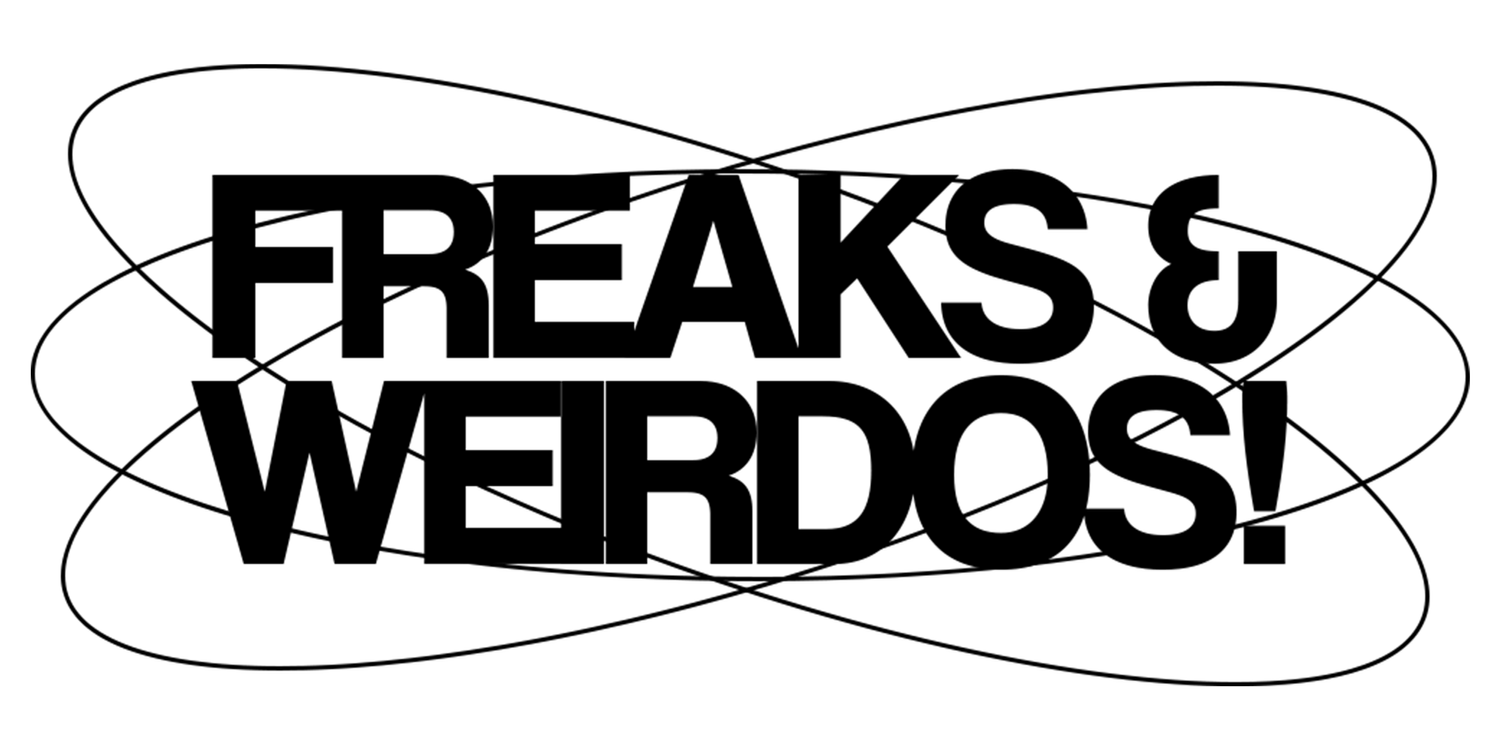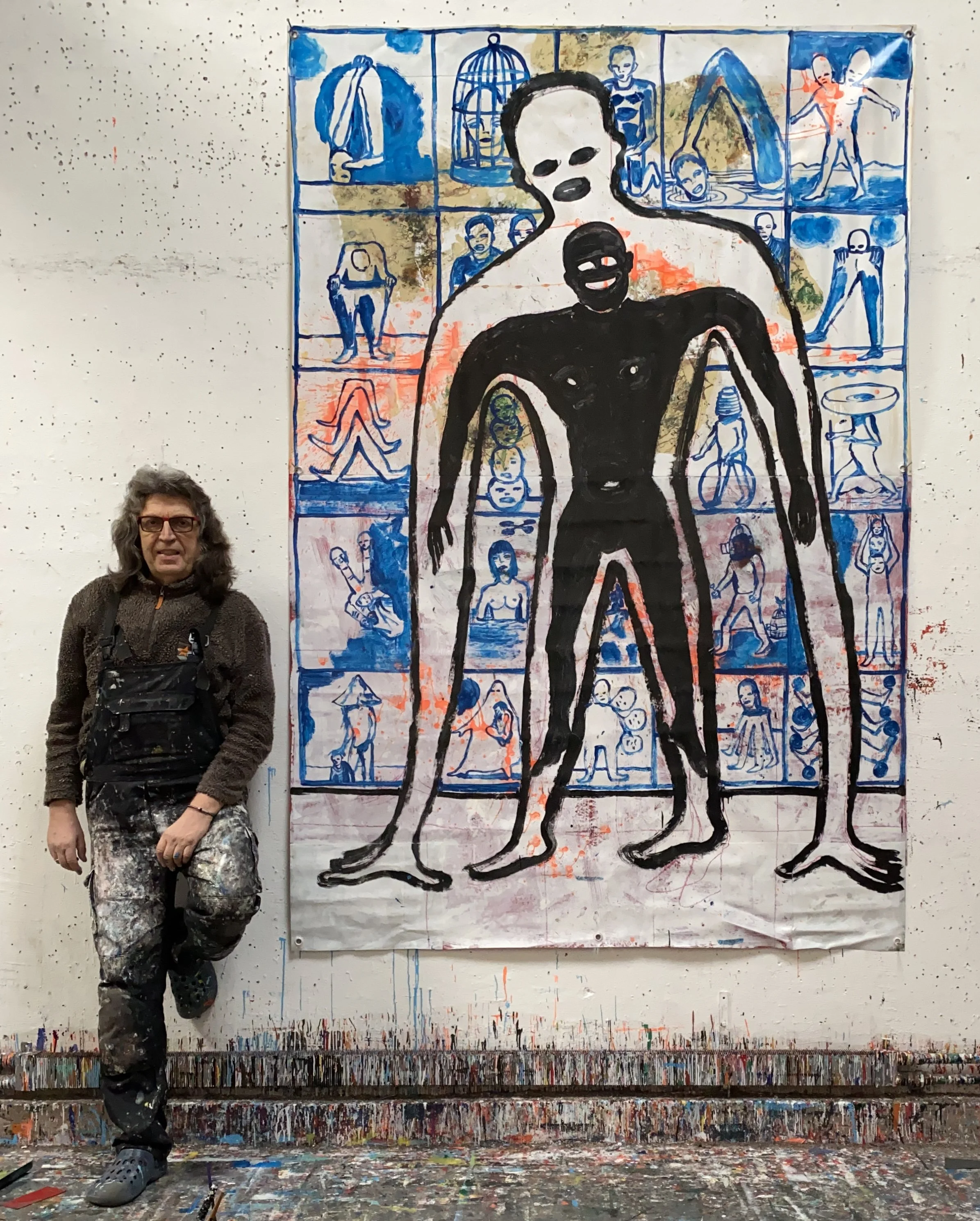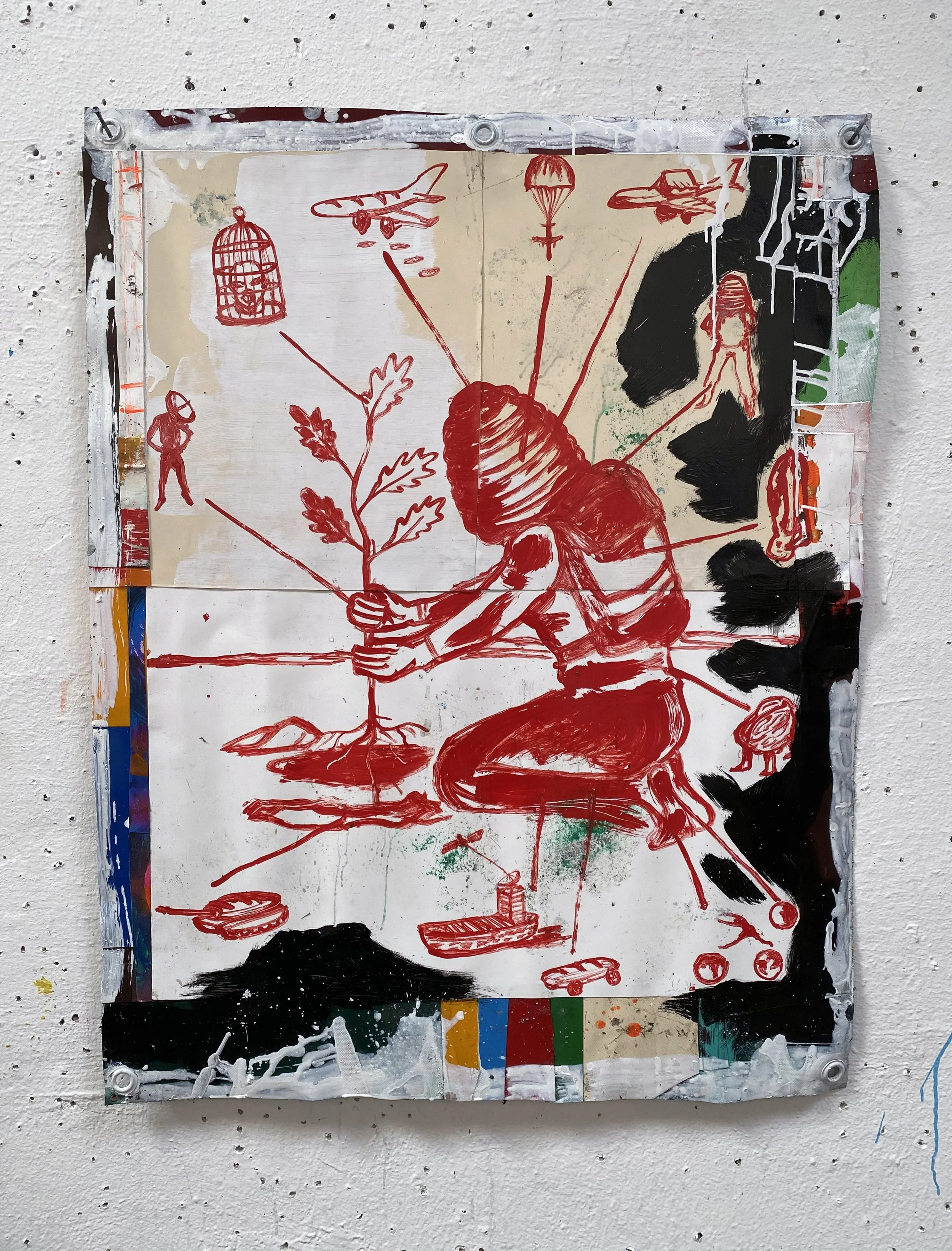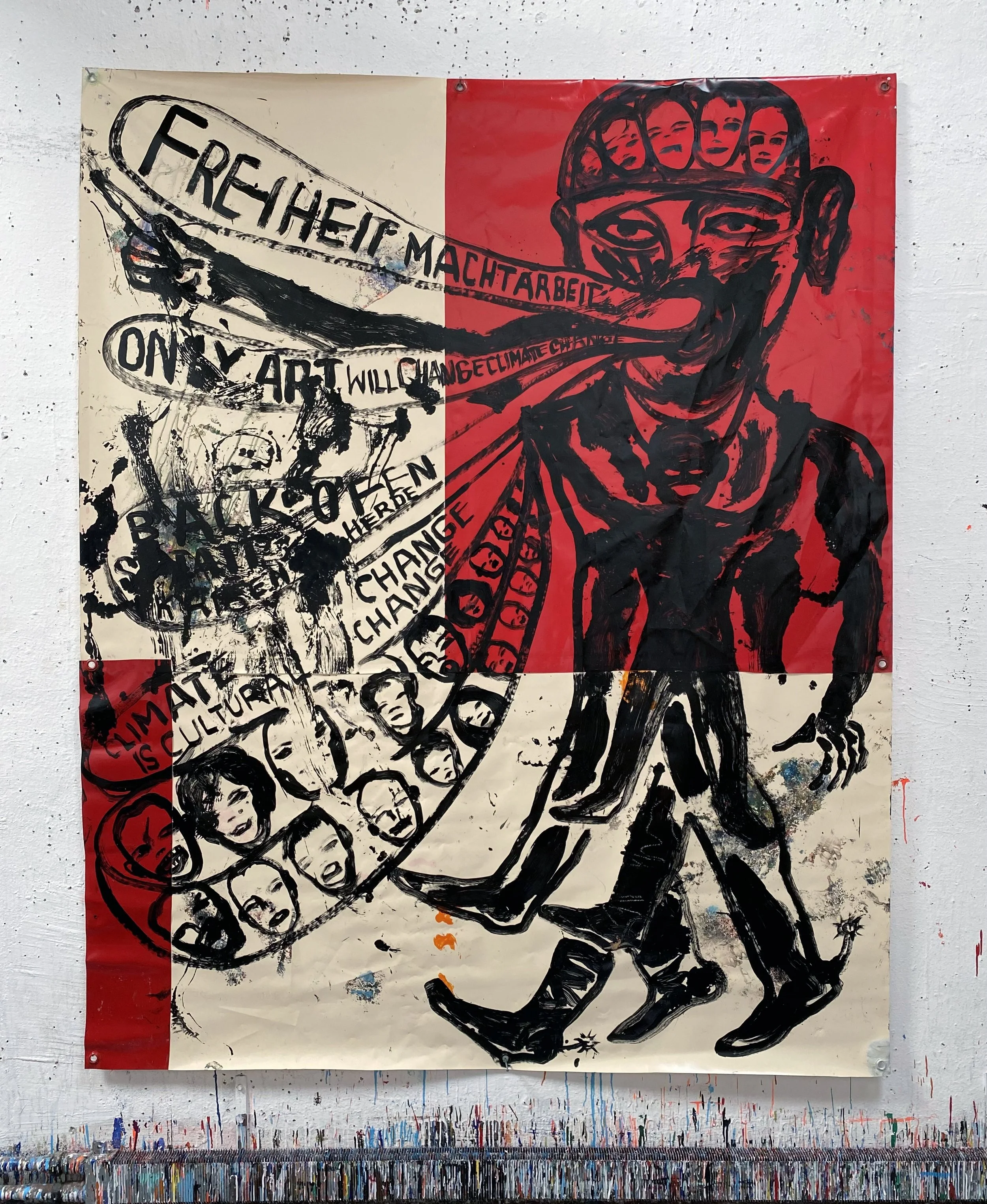HERMANN HACK
I discovered Hermann on Instagram and his work really stood out to me. I loved the raw, bold lines and colours expressed in his art. As I got to research him I discovered there were more layers to him than I was expecting. Hermann is also a strong global warming activist exclaiming that “climate change is a cultural issue, the solution can only be found by means of culture.”
Artist, Activist and Free Spirited; Read about Hermann Hack and his journey through artistic expression to cure the worlds rising climate.
When and why did you start getting involved in art?
“Ever since I can remember, I have loved to draw, already on my mother's lap, as soon as I could hold a pencil.”
What did you find out about yourself through art?
“I quickly found out that I can somehow impress and move other people with my talent. I am good at entering into non-verbal communication with them.”
Would you say that in art you find a way to express words and feelings that you find difficult to express?
“Definitely. Otherwise I could have become a writer. Pictures can convey something that language cannot.”
Would you say that in art you find a way to express words and feelings that you find difficult to express?
“Definitely. Otherwise I could have become a writer. Pictures can convey something that language cannot.”
Would you say that the place where you grew up has influenced the art you make, and if so, how?
“I'm sure that's true for everyone, for me it was a small village, far from museums and high culture. You had to prove yourself to your fellow men through other skills than through detached education. It was important to my parents that we children received a good education, yet it was formative for me not to forget the hardships of the simple people, to whom I relate, and to keep a down-to-earth attitude.”
Is a climate change activist, what do you think humanity needs to do to positively impact the climate?
“I already provocatively declared in 1991: Only art can change climate change. As stated above, it is a cultural question. To this day, art has not yet recognized this as its competence and is limited to its traditional form: escaping into an ideal world or designing the worst dystopias. It is the key to important communication of the results of climate research and the creative design of new narratives for a future worth living in the face of climate change.”
How do you think art can help move the world in a better direction?
“Humanity can no longer stop climate change. But we can use our creativity and experience to look for new solutions. What does life look like in a climate-friendly environment? What is it like to live in a car-free city? Often it only takes a few years for huge changes to take place. Who would have believed a few years ago that we would use our phones to send pictures and watch films? We need imagination and goals that we can then implement quickly and consistently.”
Coming from England, I would like to know if we have any influence at all on the creative minds outside the UK. Are there any artists in England or anything about the UK that has inspired you?
“I wouldn't say inspiration, but I like some British painters, Lucian Freud, Francis Bacon and last but not least Rose Wylie, who paints great paintings in her old age.”
On your website you say, "My paintings can be shown not only in white cubes but almost everywhere, I have shown them in refugee camps or on the street" What do you find special about showing your art in these places?
“If you are convinced, as I am, that art is not just something for the rich and influential, but should benefit everyone, you can't wait for everyone to come to the museum. Art belongs to the people, so I take it there. For me, art is communication and a suitable medium to search together for solutions to the challenges of the future.”
When you make art, do you have a point in mind? Something you want to focus on, a message/meaning or is it mainly pretty free?
“Basically, art is absolutely free. This is also true for my work. In this freedom, I have concentrated on communicating the findings from science and research, especially on climate change and its impact on our lives, to as many people as possible and to take people with me, to look together for solutions to the questions that arise.”
Is there something you really want to achieve with your art?
“I would be happy if through my art I could interest people in new ways of looking at things, in a change of perspective, and make them want to have visions for a sustainable future”
Your drawings have a very distinct rough style. I wanted to know what particularly appeals to you about this style.
“The rough, immediate appeals to me because it is direct and honest. The templates come directly from my insides into my fingers. They are mostly created in my over 200 sketchbooks and then find further implementation in large-format images on tarpaulin.”
Would you say that you use art as a way to connect more with the current reality of the world or push a future agenda?
“I first try to find out who we are through my drawings and paintings. Where do we come from? Where are we going? How can we shape our future? Through my actions, which I have been carrying out together with my friend and colleague Andreas Pohlmann for many years, we want to help shape the reality of the world, not just depict it. Since all the factors that massively drive global changes such as global warming and the resulting social consequences such as migration are primarily cultural phenomena (what we eat, how we dress, live, travel, etc.), culture has an important role to play in finding a solution, and we are taking it on.”
You also use a lot of red and black and red. What is it that connects you to these colors?
“I like the high-contrast presentation that gets to the heart of the matter.”
Do you have a favourite piece of art that you have created and why is it your favourite?
“It's like asking me as a father which of my children I love the most. When I finish a picture, I fully support it, otherwise it wouldn't be finished. I like the diversity. But I can't say which picture I love the most. Or it's always the last picture I painted.”
What advice would you give other creatives?
“Find out what your personal message is. Believe in yourself and don't let yourself be dissuaded from your own path, be authentic and stay true to yourself, even if the temptations of the market and quick money tempt you.”
What do you want to see more of from the industry?
“In their own interest, sustainability and support of culture.”
Is there anything new you would like to promote?
“We, Andreas and I, are releasing a new “Future Coloring Book” that we are using in various public campaigns. It follows on from my first coloring books for astronauts, polar and ocean explorers, which I made in 1992 and handed out to these people. In 2010 we produced a coloring book for refugees, which we used in refugee camps in Sri Lanka, Lebanon and Germany. The current coloring book is aimed at everyone to explore new perspectives for a sustainable future.”





